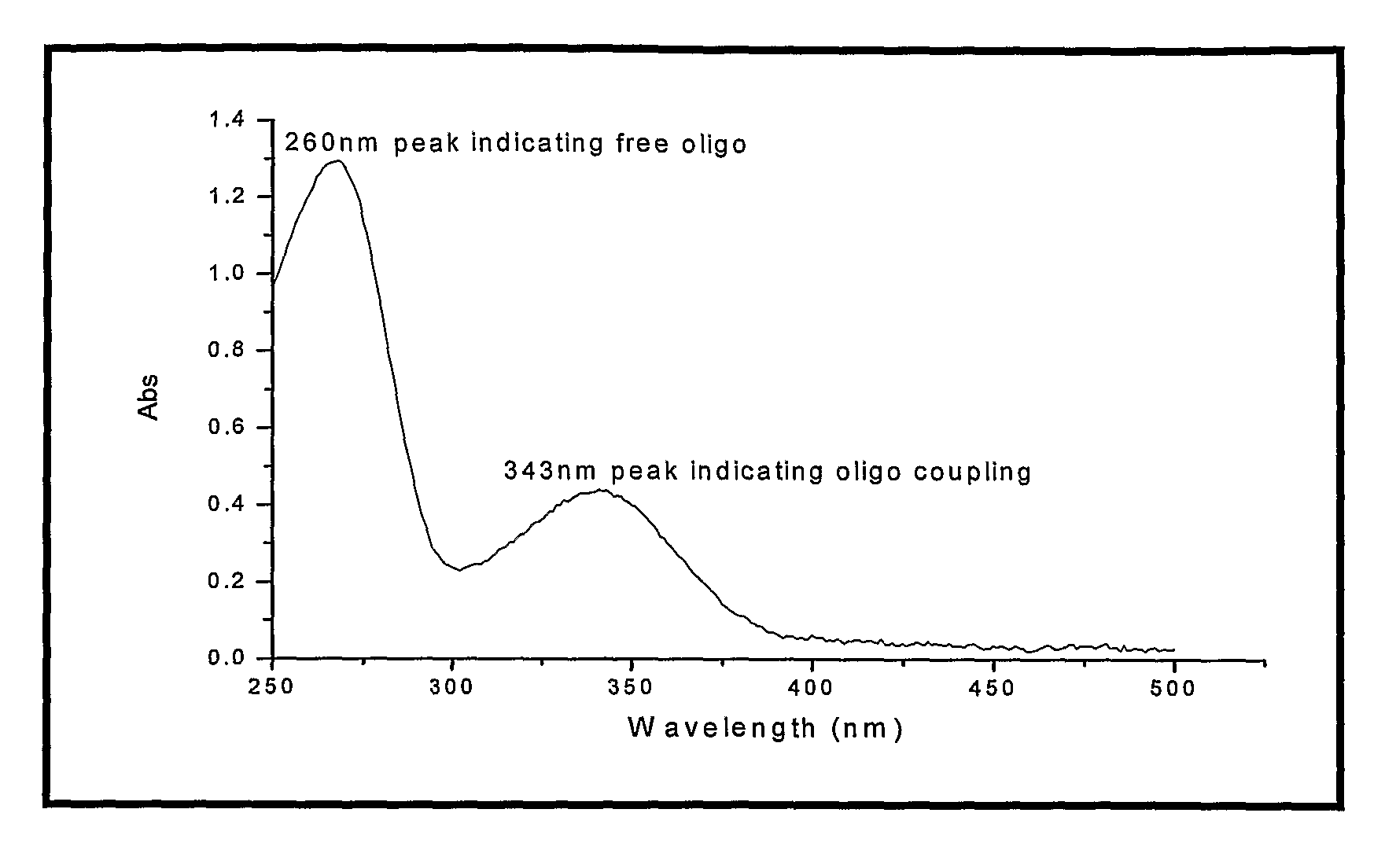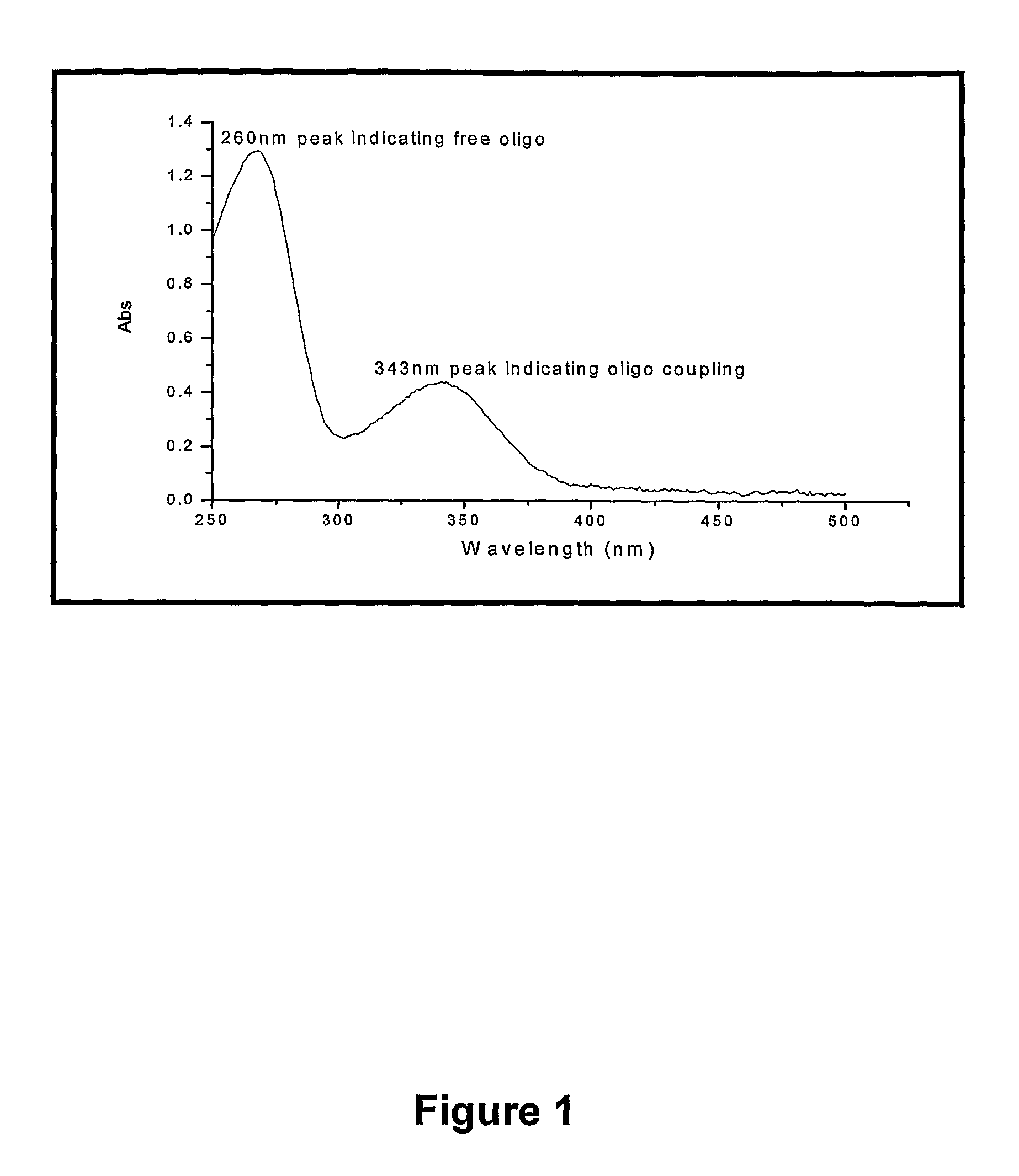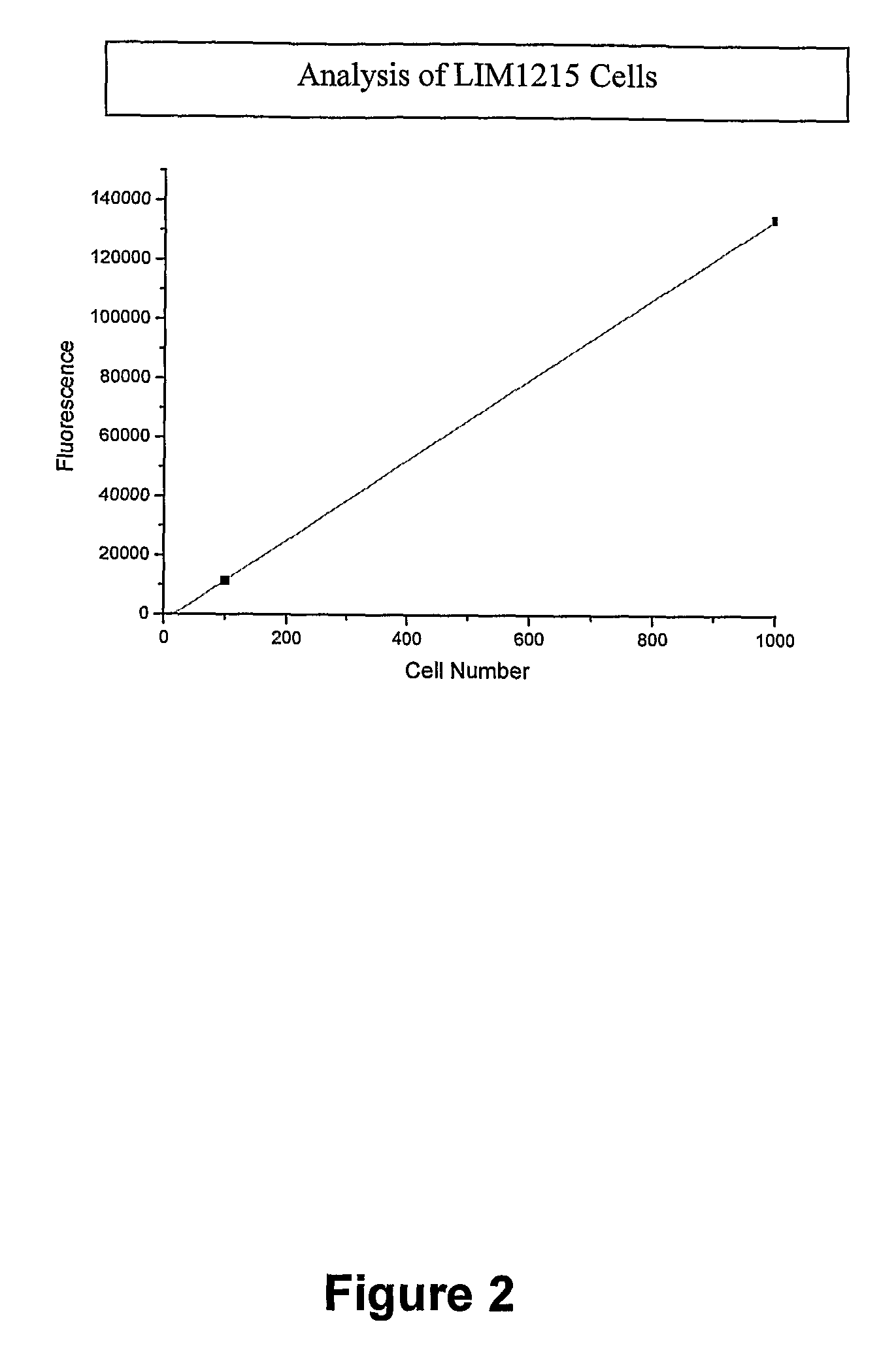Assay for detection of telomerase activity
a technology of telomerase activity and assay, which is applied in the field of diagnostic and prognostic assays, can solve the problems of difficult quantification of telomerase activity, time-consuming trap, laborious, etc., and achieves the effect of low clinical sensitivity and lessening the possibility
- Summary
- Abstract
- Description
- Claims
- Application Information
AI Technical Summary
Benefits of technology
Problems solved by technology
Method used
Image
Examples
example 1
[0186]This example describes the experimental protocols for a highly sensitive and selective biosensor assay, using luminescence as readout, to measure quantitatively telomerase in exfoliated tumor cells in the urine of bladder cancer patients or the stools from patients with colon cancer. Briefly, this assay uses superparamagnetic beads functionalized using thiol coupling to a nucleotide primer that contains the recognition sequence for telomerase. These beads (Biobeads) are incubated with tumor cell extracts, containing telomerase, in the presence of a nucleotide mixture that includes biotinylated-dUTP. Telomerase-induced elongation of the primers proceeds, with the incorporation of biotin-labeling. A number of biotin molecules are incorporated resulting in signal amplification. Avidin-Horseradish Peroxidase (HRP) is added which binds with high affinity (10−15 M) to the incorporated biotin. The Biobeads are then well washed, which minimizes contaminati...
example 2
Thiol Coupling of Target Sequence to Beads
[0240]A target sequence for telomerase, with a 5″ cysteine for thiol coupling (5′SH(CH2)6-TTTTTTAATCCGTCGAGCAGAGTTAGGGTTAGGGTTAG [SEQ ID NO:5]) was conjugated to magnetic beads using the heterobifunctional crosslinker Sulfo-LC-SPDP (Pierce). The oligo is reduced using 50 mM trialkylphosphine (tris(2-carboxyethyl) phosphine) (TCEP) for 2 hr at RT. The reduced oligo is purified from the TCEP by size exclusion chromatography on a Superpose 12 HPLC column (Amersham). The reduced oligo is then incubated with Sulfo-LC-SPDP modified magnetic beads overnight at 4° C. The conjugation is monitored via an increase in the 343 nm absorbance reading (see FIG. 1).
example 3
Telomerase Biosensor Test (TBT)
[0241]A telomerase assay was conducted as follows:
[0242]The telomerase target sequence [SEQ ID NO:1] was synthesized using a bead surface-binding oligonucleotide [SEQ ID NO:2] and the combined sequence [SEQ ID NO:3] immobilized to a Dynal (Dynal Invitrogen Corporation, 9099 North Deerbrook Trail, Brown Deer, Wis., USA 53223). Immobilization was via a cysteine residue binding to the 5′ end of SEQ ID NO:3.
[0243]Cells were obtained containing putative cancer cells and lysed with CHAPS buffer [0.5% v / v CHAPS, 10 mM Tris, 1 mM MgC12, 1 mM EGTA and 10% v / v glycerol with 1 protease inhibitor tablet (Compete Mini, Roche) per 10 ml]. The lysed cell extract was then added to the magnetic beads with dNTPs and biotinylated dUTP. Streptavidin-HRP was then added. After incubation, the beads were collected using a magnet without rotation and washed. The beads were then transformed to a 96 well plate. Luminol and an enhancer were added together with hydrogen peroxide....
PUM
| Property | Measurement | Unit |
|---|---|---|
| Magnetic field | aaaaa | aaaaa |
| Solution | aaaaa | aaaaa |
Abstract
Description
Claims
Application Information
 Login to View More
Login to View More - R&D
- Intellectual Property
- Life Sciences
- Materials
- Tech Scout
- Unparalleled Data Quality
- Higher Quality Content
- 60% Fewer Hallucinations
Browse by: Latest US Patents, China's latest patents, Technical Efficacy Thesaurus, Application Domain, Technology Topic, Popular Technical Reports.
© 2025 PatSnap. All rights reserved.Legal|Privacy policy|Modern Slavery Act Transparency Statement|Sitemap|About US| Contact US: help@patsnap.com



